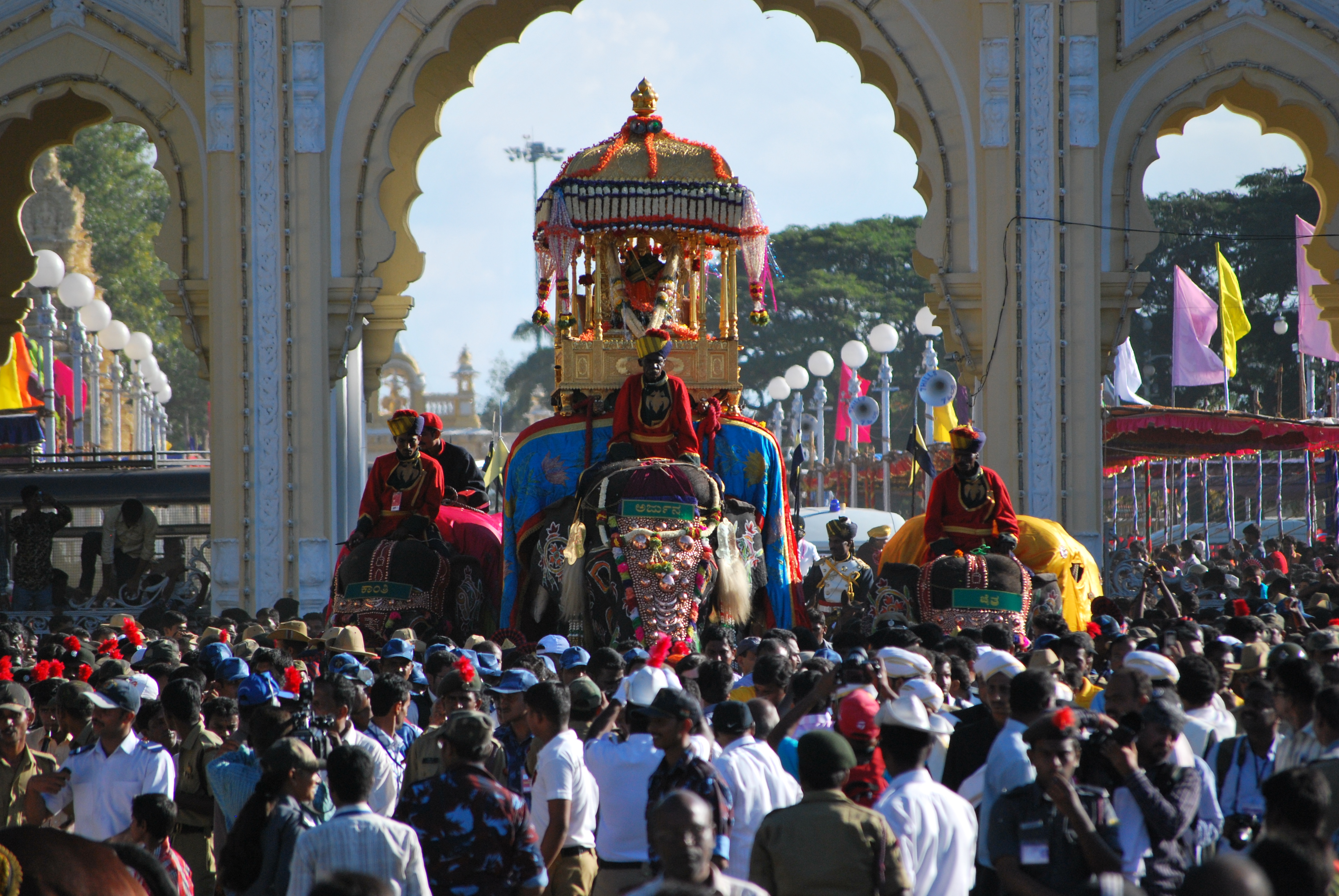
Navaratri is an Indian festival celebrated over a period of nine days in the autumn season every year. There are four seasonal Navaratris i.e. Vasantha, Sharada, Magha and Ashada out of which the Sharada Navaratri is the most popular Navaratri celebrated post monsoon in honor of Durga Devi. It is celebrated in the bright half of the Indian month of Ashwina which lies in between the english months of September and October.
Durga Devi is the devotee of the Supreme Lord Vishnu. She is also called as Vaishnavi due to her manifestation as the younger sister of Lord Vishnu who has three energies namely chit shakti(internal potency), jiva shakti(marginal potency) and maya shakti(external or illusory potency). Durga Devi is His maya shakti. She manifests with eight arms each holding different weapons such as sankha, chakra, gada, trishul, arrow, sword, shield and bell. The trishul i.e. trident in her hand symbolizes the three fold miseries of the material world i.e. adhyaatmika(by own body and mind), adhibhautika(by other living entities) and adhidaivika(by natural calmities like earthquakes, famines, wars, etc). Durga Devi is worshiped with various articles such as incense, flowers, candles, etc through her various expansions named as Bhadrakali, Vaisnavi, Vijaya, Kumuda, Chandika, Krishna, Madhavi, Kanyaka, Maya, Narayani, Ishani, Sharada and Ambika who fulfil the desires of their worshipers for material success. Among all her expansions, Kali is the most ferocious form. The word Durga is translated as a fortress or prison, where living entities who desire to enjoy independent of the Supreme Lord are kept and administered by Durga Devi. She is the appointee of Lord Vishnu as the in-charge of the affairs of the material world.
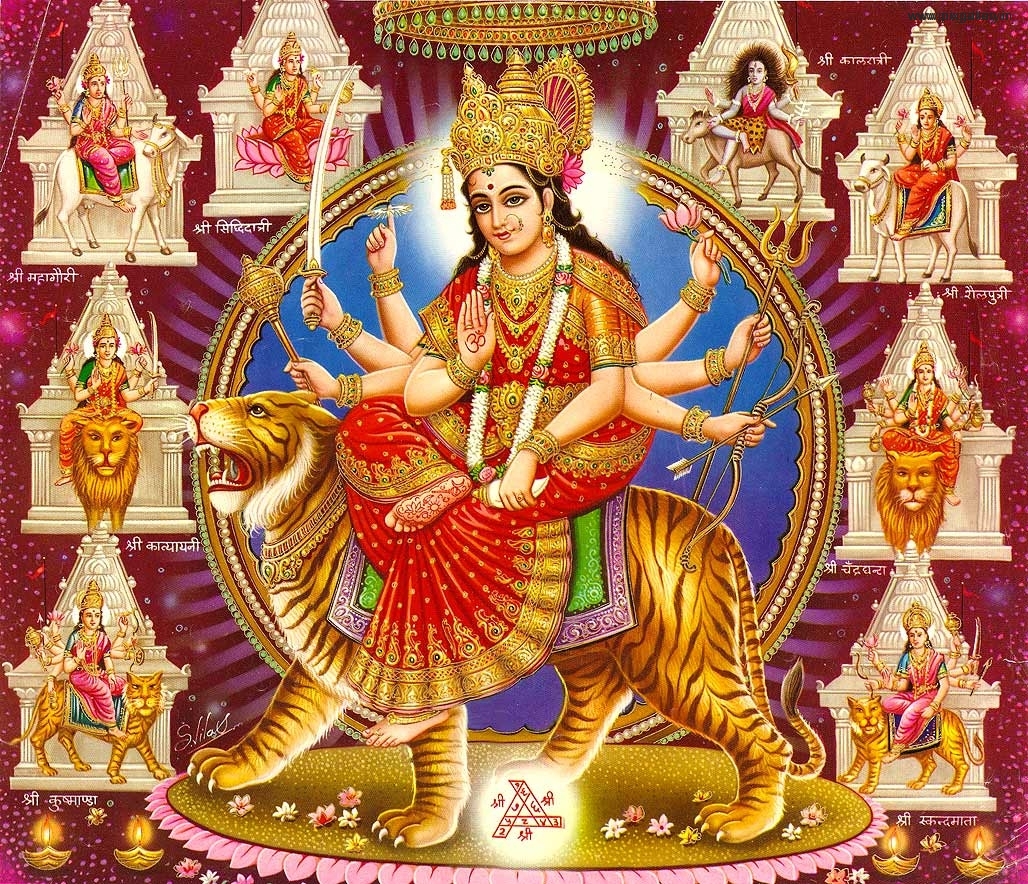
PC: Wikimedia
Navaratri is celebrated in different parts of India according to the local tradition and customs. The festival is celebrated in grandeur in West Bengal as Durga Puja, Uttar Pradesh as Dussehra and down south in Karnataka as the Mysore Dussehra. The tenth day of Vijayadashami marks the killing of the demon Mahishasura by Durga Devi who is also known as Mahishasura Mardini. Vijayadashami is also celebrated as the day when Lord Rama killed the demoniac King Ravana. In certain parts of the country such as in Uttar Pradesh where the festival is celebrated grandly, Rama Lilas depicting the pastime are enacted followed by Ravana dahana i.e. burning of the huge effigies of Ravana, Meghadoota and Kumbakarna.

PC: indileak
Durga Devi is worshiped in different forms on the nine days of the Navaratri festival which are as mentioned below along with the temples associated with that form of Durga-devi.
Navaratri Day 01 – Shailaputri Devi
Shailaputri Devi is the first among the Nava Durgas who is the absolute embodiment of mother nature. She is the daughter of Hemavana – the King of the Himalayas and is also known as Sati, Bhavani, Parvathi and Hemavathi. She carries a trident in her right hand and a lotus in her left hand while riding a bull. She is worshipped on the first day of the Navaratri festival known as Pratipada with the following prayer –
Vande Vanchhitalabhaya Chandrardhakritashekharam
Vrisharudham Shuladharam Shailaputrim Yashasvinim
The oldest temple dedicated to Shailaputri Devi is located in Marhia Ghat in Varanasi, Uttar Pradesh. Temples dedicated to Shailaputri devi are very rare. This temple is very popular and very much crowded during the Navaratri festival. A Maha Arati to the Devi takes place during this ocassion. A unique fact about the temple is that all all articles used by a bride during marriage such as sindhoor(red vermillion), bangles, etc are offered along with the daily arati three times a day.
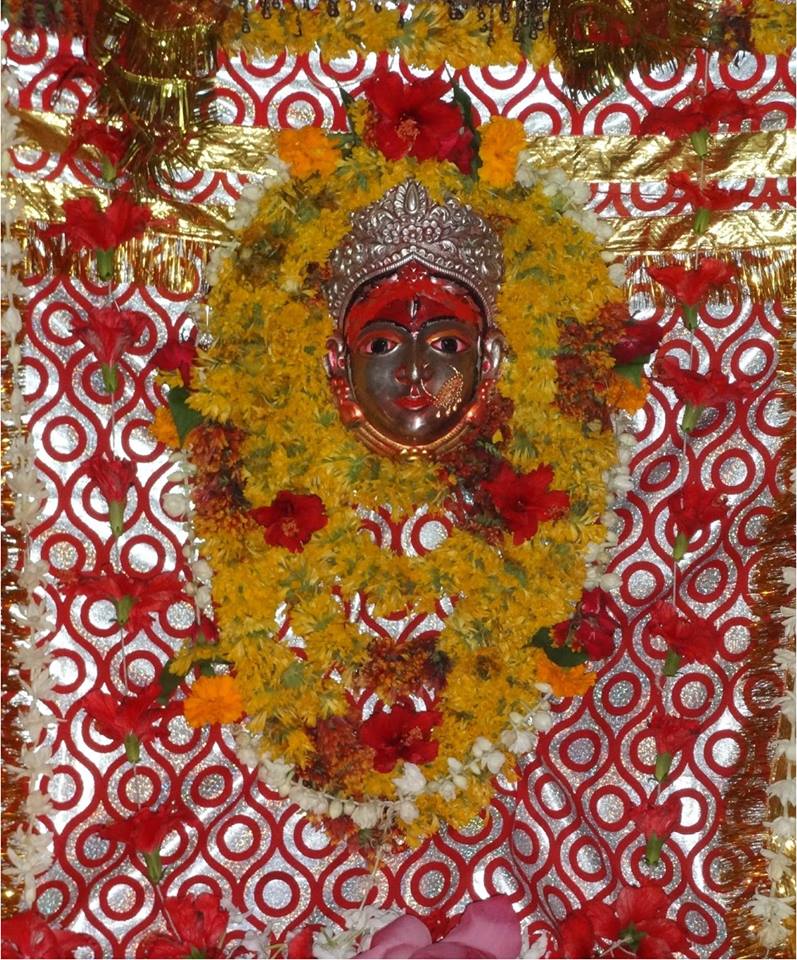
PC: apnabanaras(blog)
The lila connected to the temple as per local tradition says that once Parvathi Devi was upset with her husband Lord Shiva and hence, left Kailash and came down to Kashi. Lord Shiva came down to Kashi to take Parvathi Devi back, but she expressed her desire to stay here in Kashi and since then, the worship of Shailaputri devi has been going on.
Navratri day 02 – Brahmacharini Devi
Brahmacharini Devi is one of the Nava Durga forms who is worshiped on the second day of the Navaratri festival and also known as Tapaswini, Tapasyacharini and Parvathi. She holds a japa mala in her right hand and a kamandalu(water pot) in her left hand. Parvathi Devi is known as Brahmacharini Devi for the severe penances and austerities that she did for 5000 years to get Lord Shiva as her husband. It is said that people who worship her would be blessed with knowledge and wisdom. Brahmacharini Devi is worshipped with the following prayer –
dadhana kara padmabhyamakshamala kamandalu
devi prasidatu mayi brahmacharinyanuttama
The main temples dedicated to Brahmacharini Devi are located in Varanasi, Uttar Pradesh. They are as follows –
1. The Brahmacharini Devi Temple is located at Durga Ghat in Varanasi and well visited by devotees and visitors in Varanasi, especially during the Navaratri festival.
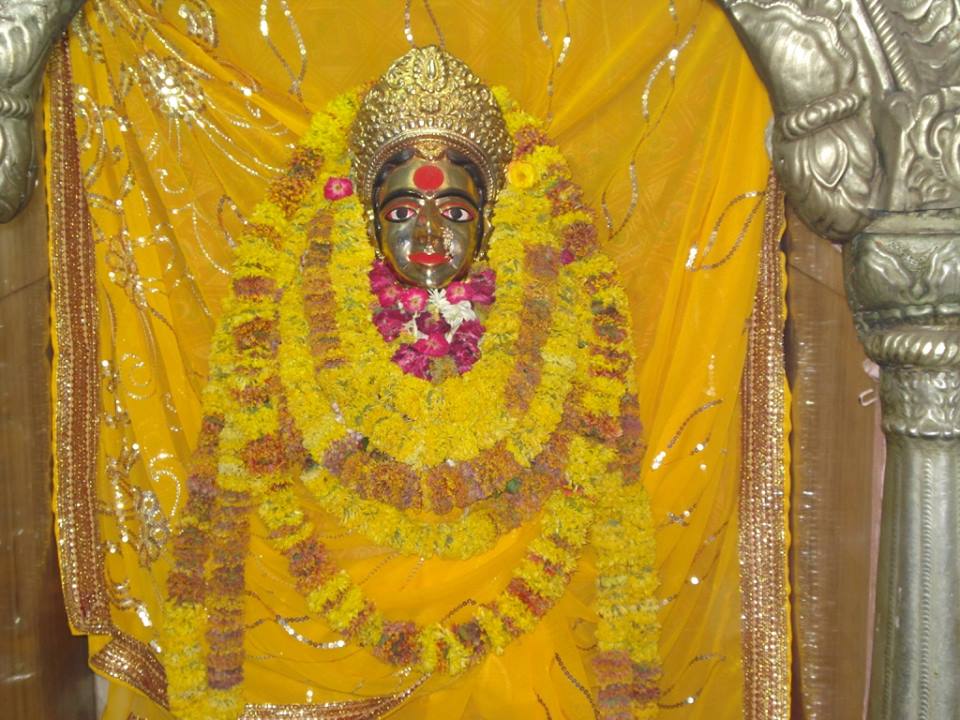
PC: Wordzz
2. Brahmacharini Devi is worshiped as Brahmini at the Brahmeshwar Temple near Dasashwamedh Ghat in Varanasi. This temple finds reference in the Kashi Khand, Chapter 70 of the Skanda Purana where it is mentioned that one can find Brahmini(Brahmacharini Devi) near Lord Brahmeshwar in Kashi.
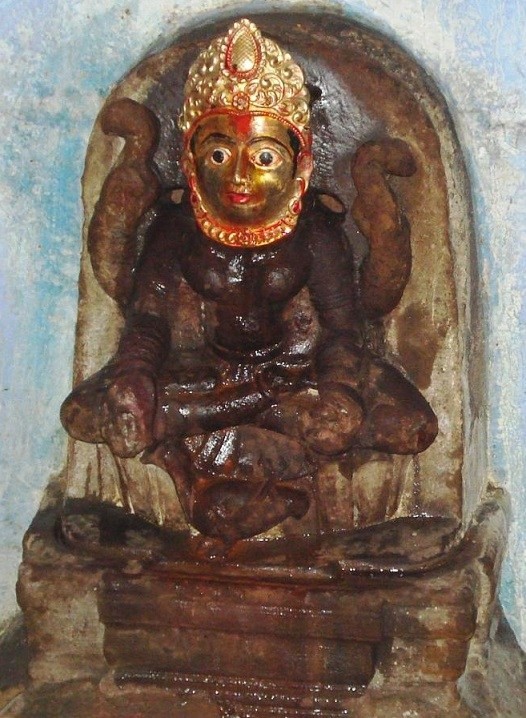
PC: Wordzz
Navaratri Day 03 – Chandraghanta Devi
Chandraghanta Devi being one of the Nava Durga forms is worshipped on the third day of the Navaratri festival called as Tritiya. She is also known as Chandika, Chandrakhanda and Rannchandi. Chandraghanta Devi is golden in complexion and wears a half moon on her forehead from which her name is derived. Her third eye on her forehead is always open. She has eight hands holding trishul, gada, sword and kamandalu (water pot) in her four left hands and lotus flower, arrow, bow and japa mala in her four right hands with the tiger being her vahana (vehicle). Chandraghanta Devi is worshipped with the following prayer –
pindaja pravararudha chandakopastrakairyuta
prasadam tanute mahyam chandraghanteti vishruta
This form of Chandraghanta Devi is attributed to events that happened after Lord Shiva agreed to marry Parvati Devi. Lord Shiva arrived at King Himavan’s palace accompanied by Devatas, Sages, Ghosts, Shiva Ganas, etc to marry Parvati Devi and take her away in a fearful form which caused Parvati Devi’s mother Maina Devi to faint. Parvati Devi saw this form of Lord Shiva and transformed herself into the form of Chandraghanta Devi to revive her parents and family who were terrified of this form of Lord Shiva.
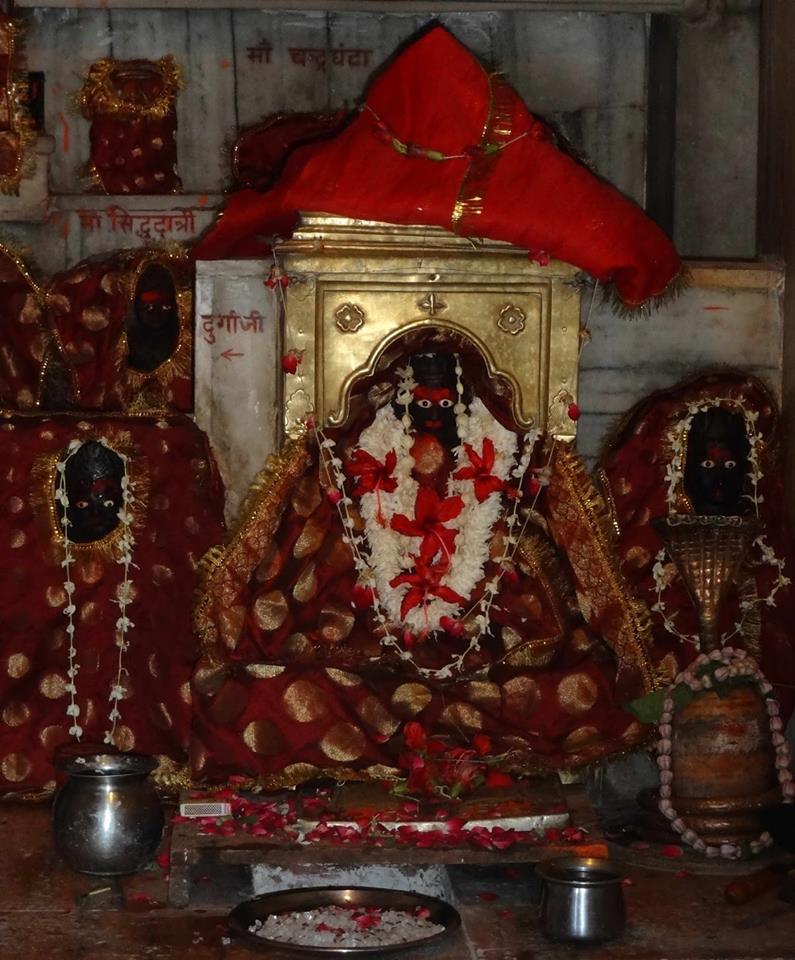
PC: apnabanaras(blog)
The oldest and most popular temple dedicated to Chandraghanta Devi is located at Jaitpura in Varanasi, Uttar Pradesh. Devotees flock to this temple on the third day of Navaratri and make offerings of coconuts, red cloth pieces called chunris and red flowers. The Kashi Khand of the Skanda Purana advises a devotee to take a bath in Chitra Koop nearby, worship Chitra Gupteshwar and Chitra Ghanta Devi (the other name for Chandra Ghanta Devi). It is mentioned that the name of devotees who worship here with rapt attention will not be mentioned in the books of Chitra Gupta.
Navaratri Day 04 – Kushmanda Devi
Kushmanda Devi is one of the Nava Durgas worshiped on the fourth day of the Navaratri festival known as Chaturthi. The word Kushmanda means ‘the cosmic egg’. It is said that when Lord Vishnu was creating the universe, Kushmanda Devi smiled like a blossomed flower after which the universe came into being. Parvati Devi started residing in the center of the sun after the Siddhidatri manifestation to ensure that the sun releases energy to the universe and hence, she came to be known as Kushmanda Devi. She rides a lioness and has eight hands holding the kamandalu, dhanush, bada and kamal in her four right hands and in her four left hands she holds the amrit kalash, japa mala, gada and chakra. She has a radiant face and a golden body complexion. Kushmanda Devi is worshiped with the following mantra –
surasampurnakalasam rudhiraplutameva cha
dadhana hastapadmabhyam kusmanda subhadastu me
The only temple dedicated to Kushmanda Devi is located in Ghatampur village in Kanpur district of Uttar Pradesh. This temple is said to be 1000 years old and the Deity of Kushmanda Devi is Swayambhu(self manifested) in a lying down position. The temple was renovated in the year 1890 by a local businessman. The locals here call Kushmanda Devi as Kudhaa Devi and hence, the temple is also called Kudhaa Devi Mandir. Water has been found dripping from the Deity right from the time the Deity was found which is taken as Prasadam by the local people and claimed to cure diseases. No one has ever been able to find the source of the water in spite of many researches being done.
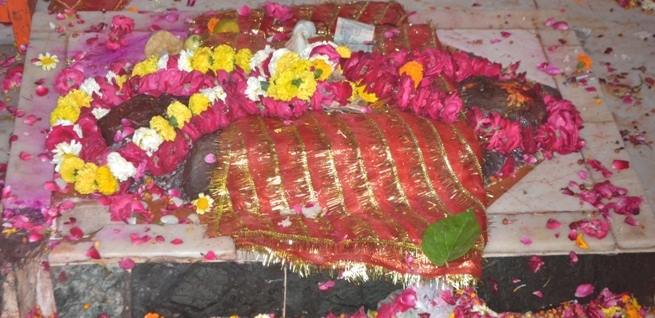
PC: nyoooz
A unique aspect of worship here is that, only the men of the temple gardener’s family have been doing the worship of Kushmanda Devi since ages. Navaratri festival is celebrated here in grandeur and on the days of the Ashtami tithi, ‘Deep Daan’ festival(offering of lights) is conducted at the pond nearby the temple.
Navaratri Day 05 – Skandamata Devi
Skandamata Devi is one of the Nava Durgas who is worshiped on the fifth day of the Navaratri festival called as Panchami. The word Skandamata means the mother of Skanda i.e. Lord Karthikeya. She has four hands out of which her two upper hands are holding two lotus flowers, the others holding baby Skanda on her lap and also depicting the abhayamudra. She is white in complexion being seated on a lotus and riding the lion as her vehicle. As she is seated on a lotus, she is also called Padmasana Devi. Skandamata Devi is worshiped with the following mantra –
simhasanagata nityam padmashritakaradvaya
shubadastu sada devi skandamata yashaswini
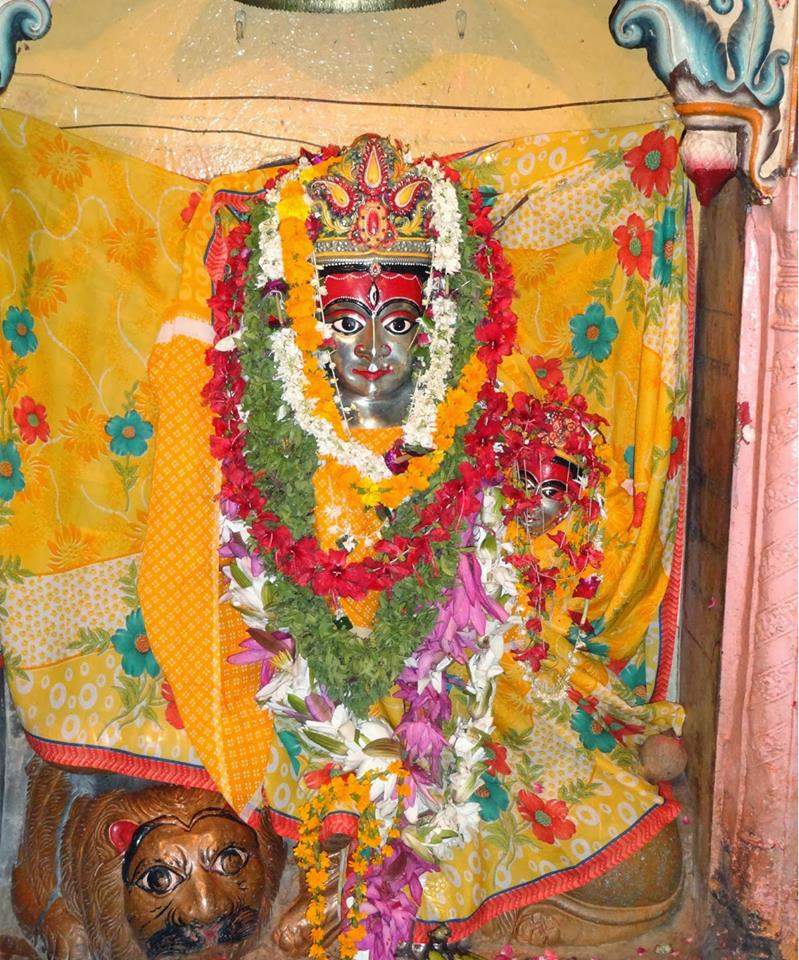
PC: apnabanaras(blog)
The only temple dedicated to Skandamata Devi is located in Jaitpura area of Varanasi in Uttar Pradesh. The temple attracts people throughout the year but is filled with devotees during the Navaratri festival. The Skandamata Deity is worshiped on the upper floor of the temple complex. The priest here is a lady.
Navaratri Day 06 – Katyayini Devi
Katyayini Devi is one of the Nava Durgas worshiped on the sixth day of the Navaratri festival known as Shashti. Katyayini Devi who rides a lion as her vehicle is also the second name for Parvati Devi. She has four hands in which two hands are holding the lotus flower and sword while other two hands are in the abhayamudra and varadamudra mode. The origin of Katyayini Devi and her pastimes find mention in many ancient Indian works, especially the Devi Bhagavatam and Devi Mahatmayam which are part of the Markandeya Purana. Additionaly, she finds mention in Jain, Buddhist and Tantric texts, especially the Kalika Purana which mentions Uddiyana or Odradesha(Odisha) as the seat of Goddess Katyayini. In Shaktism, she is associated with the fierce forms of Durga Devi. Katyayini Devi is worshiped with the following prayer –
chandrahasojjvalakara shardulavaravahana
katyayani shubham dadyad devi danavaghatini
It is said that Katyayini Devi manifested from the anger of Lord Vishnu, Lord Shiva and Lord Brahma after they heard about the barbaric activities of the demon Mahishasura from the devatas. After her manifestation, Lord Vishnu armed her with his sudarshana chakra, Lord Shiva gave his trident, Lord Brahma gave her his rosary and the devatas armed her with their respective weapons. Armed with all the weapons, she went to the demon Mahishasura’s place and killed him in a fight. This pastime was witnessed by Sage Katyayana who desired that the Goddess be his daughter and thus his devotion intensified. The Goddess being pleased with the devotion of Sage Katyayana named herself Katyayini after his name.
One of the oldest temples of Katyayini Devi is the Sri Katyayini Baneshwar Temple located in Aversa, a coastal town in the Uttara Kannada district of Karnataka. This temple was originally located in Goa but moved to it’s current location along with all the original Deities during the Portugese invasion of Goa in the sixteenth century. The Deity here has a slightly bent neck which is attributed to a pastime of the Deity accepting a marigold flower offering.
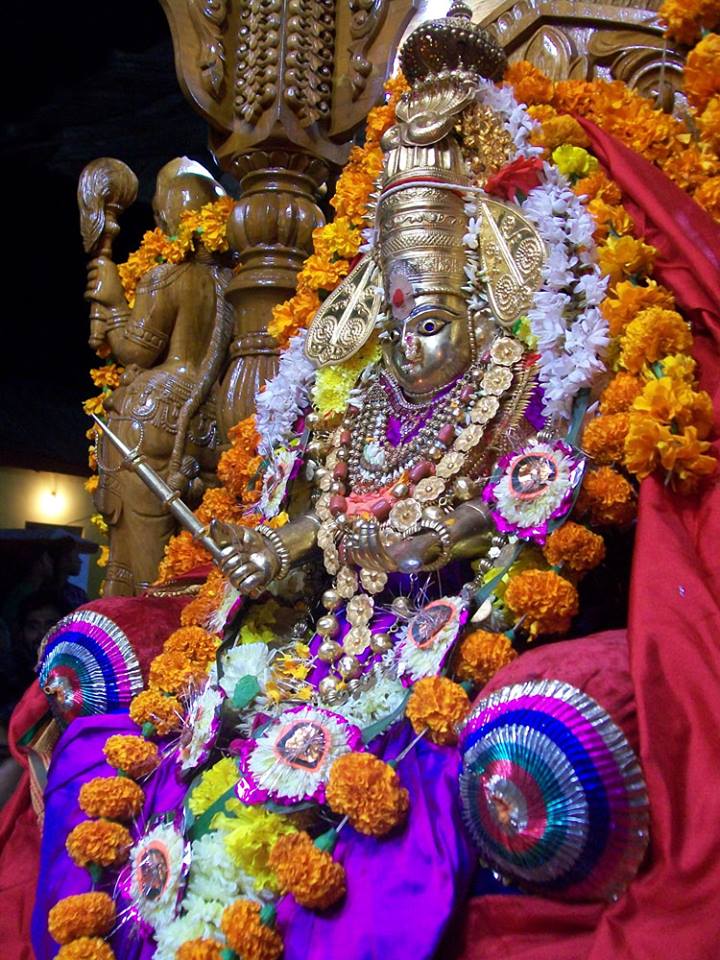
PC: Baneshwar Temple
The other important temples dedicated to Katyayini Devi are as follows –
- Sri Katyayani Temple, Bakor, Mahisagar District, Gujarat
- Sri Katyayani Peeth Temple, Vrindavan, Uttar Pradesh
- Sri Karthiyayani Temple, Cherthala, Alappuzha, Kerala
- Sri Katyayani Temple, Kolhapur, Maharashtra
- Sri Kathyayini Amman Temple, Marathurai, Thanjavur, Tamil Nadu.
- Sri Katyayani Shakthipeeth Adhar Devi(Arbuda Devi) Temple, Mount Abu, Rajasthan
- Sri Kathayee Amman temple, Nelli Thoppu, Kovilur, Thanjavur, Tamil Nadu
Navaratri Day 07 – Kalaratri Devi
Kalaratri Devi is one of Nava Durgas worshiped on the seventh day of the Navaratri festival known as Saptami. She is known to be the most ferocious amongst the fierce forms of Parvati Devi i.e. Kali, Mahakali, Bhadrakali, Bhairavi, Mrityu, Rudrani, Chamunda, Chandi and Durga and is the destroyer of all demoniac entities, ghosts, and negative energies. The lesser known names of Kalaratri Devi are Raudri, Dhumorna and Shubankari. Kalaratri Devi rides a donkey as her vehicle and has four hands with her two right hands in the abhayamudra and varadamudra modes and her two left hands holding a sword which is curved at the end and a hooked vajra ayudha. She is pitch black in complexion with disheveled hair, three large round eyes and constantly exhales fire flames through her nose. Kalaratri Devi is worshiped with the following prayer –
ekaveni japakarnapura nagna kharasthita
lamboshthi karnikakarni tailabhyakta sharirini
vamapadollasalloha latakantakabhushana
vardhana murdhadhwaja krishna kalaratrirbhayankari
An ancient tantric text by the name Saudhikagama describes Kalaratri Devi as the Goddess that rules the night. She is also referenced in other ancient Indian works such as the Mahabharata, Markandeya Purana, Skanda Purana, Varaha Purana and the Vishnudharmottara Purana.
One of the oldest and rare temples of Kalaratri Devi is located in Kalika Galli in Varanasi, Uttar Pradesh which is frequented by devotees especially the elderly. Devotees throng the temple during the Navaratri festival and the place where the temple stands i.e. Kalika Galli is named after the Goddess. The temple is also considered as one of the Shakti Peethas of Varanasi.
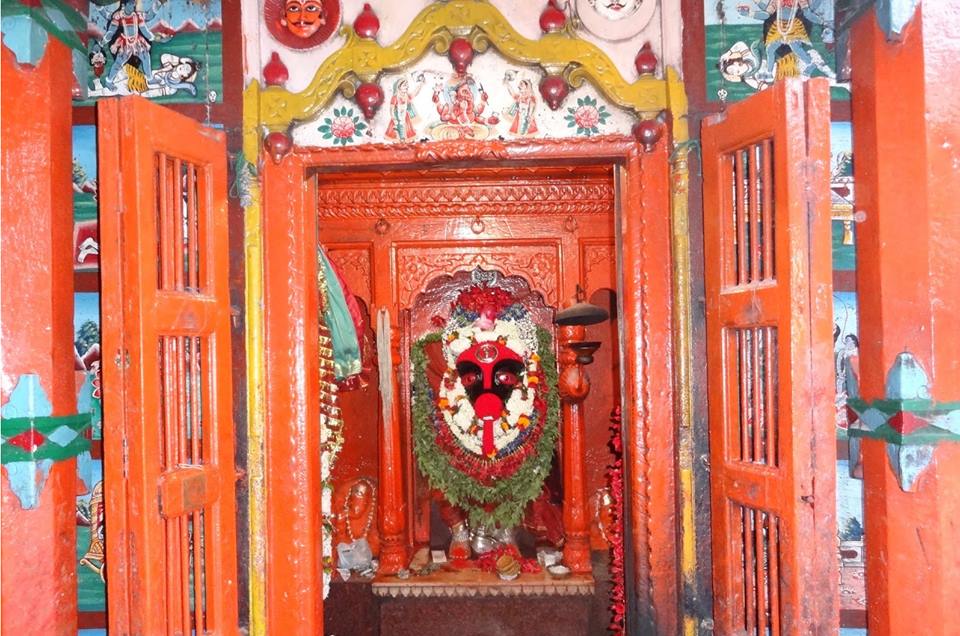
PC: apnabanaras(blog)
The other two important temples dedicated to Kalaratri Devi are as follows –
- Kalratri Temple, Dumri Buzurg, Nayagaon, Bihar
- Kalratri Temple, Vindhyachal, Mirzapur, Uttar Pradesh
Navaratri Day 08 – Maha Gauri Devi
Maha Gauri Devi is one of the Nava Durgas worshiped on the eight day of the Navaratri festival called as Ashtami. It is said that Parvati Devi was blessed with extreme beauty and a very fair complexion at a young age of sixteen. Hence, she was called Maha Gauri. She is also known as Adi Parashakti with four hands out of which two hands are in the abhayamudra and varadamudra modes while the other two hands hold the Trishul and Damaru. Due to her wearing only white clothes, she is also known by the name Shwetambaradhara. Her vehicle is the bull because of which she is known as Vrisharoodaa. Maha Gauri Devi is worshiped with the following prayer –
shwete vrishesamaroodaa shwetambaradhara shuchih
mahagauri shubham dadyanmahadeva pramodadaa
Among the rare temples dedicated to Maha Gauri Devi is the Siddh Shakti Peeth Sri Maha Gauri Mandir located at Shimlapuri in Ludhiana, Punjab. This temple is said to be one of the fifty two Shakti Peethas where the small stone Deity of Maha Gauri Devi is swayambhu i.e. self manifested. The divine foot prints of Maha Gauri Devi can also be seen here. The temple attracts devotees throughout the year especially on the ocassion of the Navaratri festival.
The other temple dedicated to Maha Gauri Devi is located at Vishwanath Galli in Varanasi, Uttar Pradesh.
Navaratri Day 09 – Siddhidatri Devi
Siddhidatri Devi is one of the Nava Durgas worshiped on the final day of the Navaratri festival. It is said that she manifested from the left half of Lord Shiva after which he was known as Ardha Narishwara. She is always surrounded and worshiped by the devatas, gandharvas, asuras, yakshas and siddhas. She rides a lion and has four hands out of which her two right hands hold the chakra and gada while her two left hands hold the shankha and kamal(lotus flower). She also sits on a kamal. Siddhidatri Devi is worshiped with the following prayer –
siddha gandharva yakshadyairasurairamarairapi
sevyamana sada bhuyata siddhida siddhidayini
The Rangir Mata Temple located at Rangir in Sagar District of Madhya Pradesh is an ancient temple dedicated to Siddhidatri Devi. This temple is a Shakti Peetha with a swayambhu Deity where Sati Devi’s thigh is said to have fallen after her dead body was cut into many parts by Lord Vishnu’s sudarshana chakra. The name of the place and the temple is derived from the word raane which means thigh. The Deity of Siddhidatri Devi here is also known as Harsiddhi Mata as she is known to fulfill the desires of all devotees who worship her. The Deity here is well known for being dressed in various alankaras in one day. As per the temple pujaris, devotees come here from far off places to offer water to Siddhidatri Devi on the ocassion of Navaratri festival.
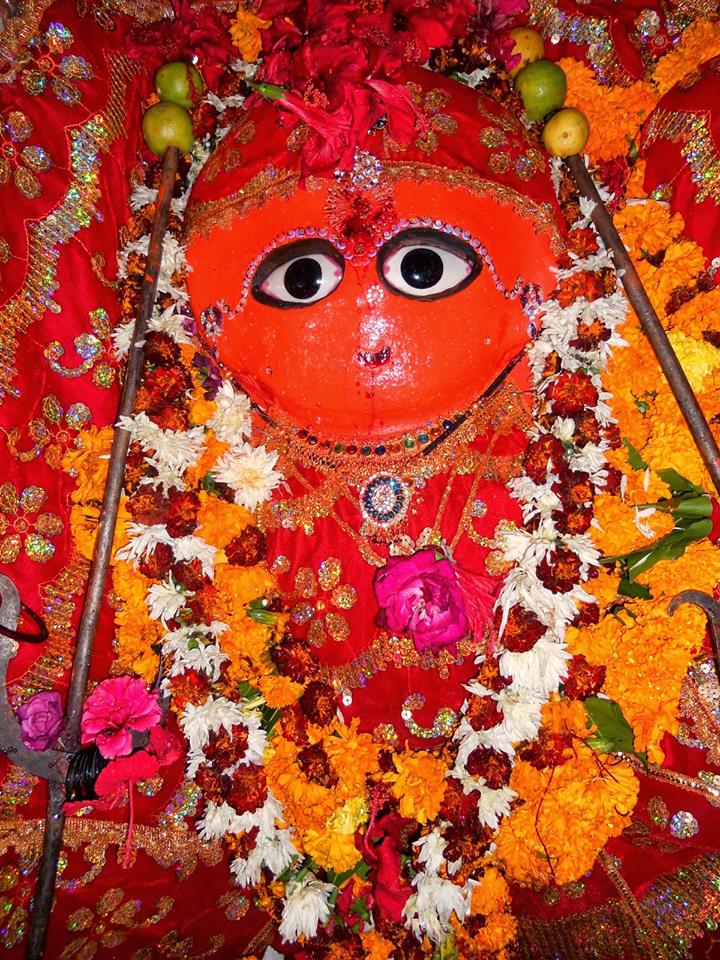
PC: bhopalsamachar
The other important temples of Siddhidatri Devi are as follows –
- Siddheshwari Temple at Siddheshwari Mohalla in Varanasi, Uttar Pradesh. Another temple dedicated to Siddhidatri Devi here is the Siddheshwari Temple at the Siddhamata Galli near Kaalbhairav Temple.
- Siddhidatri Mandir at Chankyapuri Colony in Satna, Madhya Pradesh.
- Siddhidatri Mandir in a small village called Devpahari in Chattisgarh.
- Siddhidatri Devi Temple on the Magadi – Ramanagara road in the Siddedevarabetta state forest region of Karnataka.











3 Comments On Navaratri – the victory of Dharma
A Detailes and well researched article about Navarathri.Got myself educated.Wish You publish many such insightful article
Varalakshmigopal
Hare Krishna
May TIRTHA YATRA grow strength to strength
Many thanks for the good wishes.